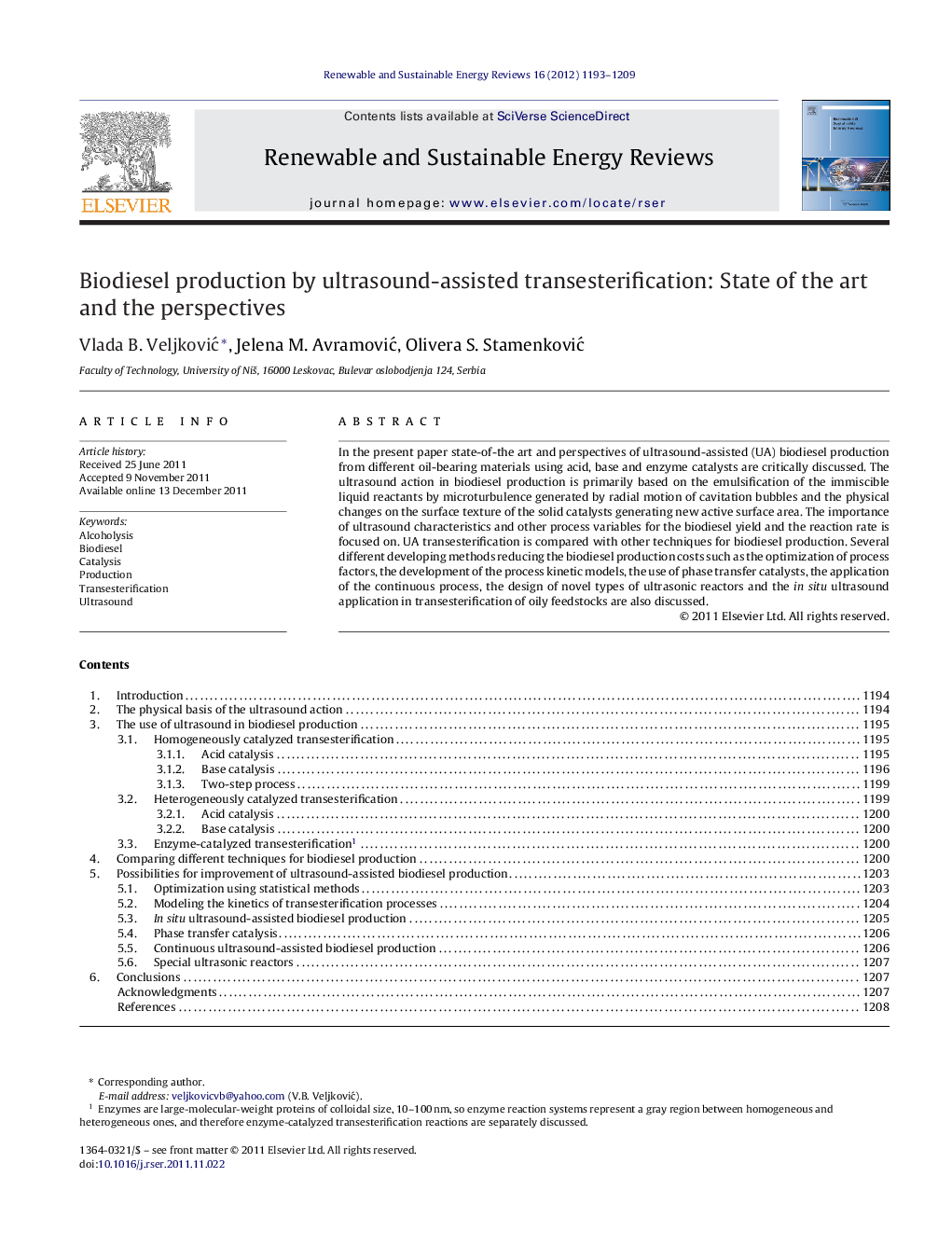| Article ID | Journal | Published Year | Pages | File Type |
|---|---|---|---|---|
| 1750786 | Renewable and Sustainable Energy Reviews | 2012 | 17 Pages |
In the present paper state-of-the art and perspectives of ultrasound-assisted (UA) biodiesel production from different oil-bearing materials using acid, base and enzyme catalysts are critically discussed. The ultrasound action in biodiesel production is primarily based on the emulsification of the immiscible liquid reactants by microturbulence generated by radial motion of cavitation bubbles and the physical changes on the surface texture of the solid catalysts generating new active surface area. The importance of ultrasound characteristics and other process variables for the biodiesel yield and the reaction rate is focused on. UA transesterification is compared with other techniques for biodiesel production. Several different developing methods reducing the biodiesel production costs such as the optimization of process factors, the development of the process kinetic models, the use of phase transfer catalysts, the application of the continuous process, the design of novel types of ultrasonic reactors and the in situ ultrasound application in transesterification of oily feedstocks are also discussed.
